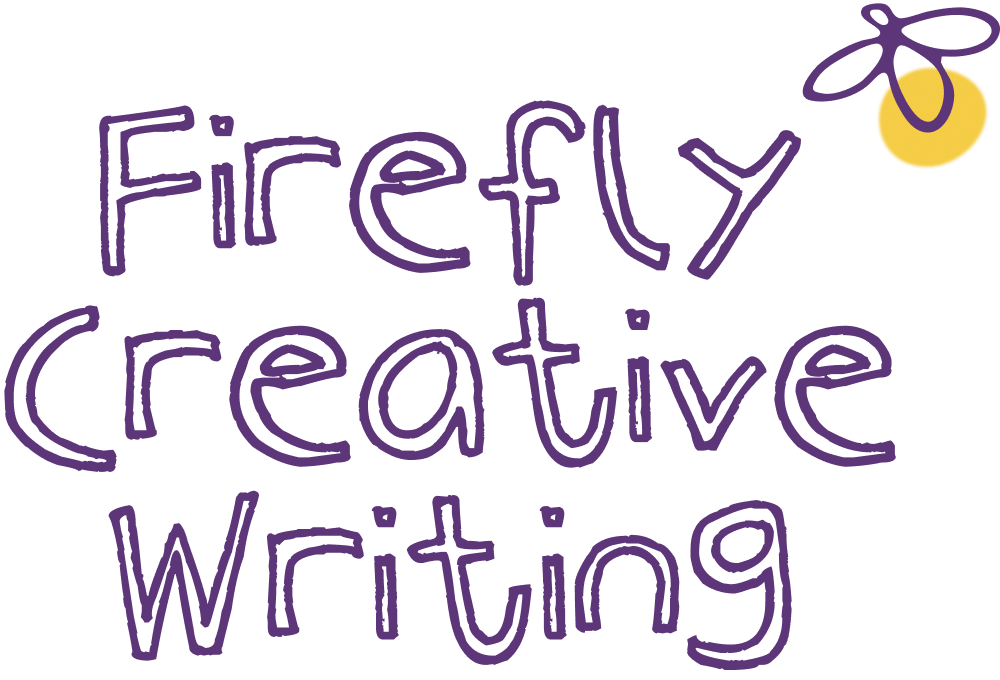I want to help everyone write fat characters better. Here’s why.
A close-up view of a woman sitting at a desk and writing. She is pale-skinned and fat, wearing red nails, a cream sweater, and a wedding ring. (Photo credit: Fiona Murray-deGraaff via Unsplash)
Hi, Sophia here!
After many years of prep, I’ve created a new Firefly offering about writing fat characters, and I want to tell you why.
But first, let me take you back.
As a kid, I read everything I could get my hands on. Books were the place I felt most myself, and reading late into the night was my sanctuary.
Working my way through Judy Blume’s books felt especially wonderful — I related to her characters’ thoughts and feelings, which were angsty and tangled just like mine.
And then I read Blubber.
For the first time, this was a book about a girl who looked like me. And she was being relentlessly bullied by her classmates for being, well — “Blubber.” Around this time, the bullying euphemisms had started to pile up in my life too — plump, big-boned, chubby, curvy.
There’s a moment in the book that’s stayed with me for decades. One of the bullies, after losing weight, stands up and says with pride that she can look down and see her feet. She is celebrated and declared normal.
When I read that line, I stood up, looked down, and couldn’t see my feet.
It hit me like a wave. I was Blubber. I deserved to be bullied. My body was something to change, fix, and hide. Blubber confirmed what I’d begun to suspect — that fat equals bad, eternally rejected, and undeserving.
And, worse, Blubber doesn’t get a happy ending. By the end of the book she was still getting bullied, still shaky and insecure. Judy Blume didn’t write her a story that let her grow past that terrible moment.
As I moved into adulthood, my love of reading continued. My first career was as a librarian who specialized in helping libraries buy their books. In those years, I continued to take in the messages about what it means when a character is fat.
I read about Bombur in The Hobbit, always lagging behind, his fatness a problem the other more heroic dwarves had to manage.
I read about the Dursleys in Harry Potter, described with such disgust and where fatness stood in for cruelty, laziness, and greed.
I read about Bridget Jones, counting calories and pounds with every page turn, tying her weight directly to her worth, her desirability, and her chances at love.
And then there were the many, many, many books where fat people simply didn’t exist. These were perhaps the most painful of all. In the authors’ imaginations, there was no room for body diversity, no future for fat folks.
Like all stories, these wove into my sense of what was possible for me. They told me over and over that to be fat was to be less. Less brave. Less lovable. Less deserving. Less heroic.
Thankfully, as writers, we know that stories can be re-written. Knowledge can be deepened.
The narratives we carry about bodies and belonging can be reshaped into something more honest, expansive, and free.
That’s why I created this offering.
This is my small way of supporting writers who want to bring creativity, intention, and authenticity to portraying fat bodies, whether or not they are fat themselves.
This is for writers who want to clear the slate and write fat characters who are realistic, complex, and far less likely to send fat readers into a shame spiral. In other words — how to write fat characters as people.
It’s a simple one-off coaching session where you can bring your works-in-progress, and I can meet you, shame-free, in helping you evolve your work past the painful stereotypes and erasures that keep us from full expression in the literary world.
I’ll ask honest questions.
I’ll invite your questions.
I’ll be grateful that you’re there with me in those questions.
Together, we’ll breathe new life into your work so that it can make a contribution towards building a kinder and more liberated narrative world for all your readers.
Oh, and I should also say: Everything isn’t terrible.
Some writers have been getting fat bodies right for a long time. They deserve some space here, before I sign off.
skin & bones by Renée Watson is a gorgeous novel that woke me up to the fact that there could be four — yes four — fat characters in a book.
Shrill by Lindy West is a memoir that was later turned into a TV show that showed me how gorgeous a fat body looks when it’s having sex.
”You Just Need to Lose Weight” and 19 Other Myths About Fat People by Aubrey Gordon is a searing and priceless non-fiction deep-dive into everything that’s wrong with the lie of diet culture.
And this poem, by Lucille Clifton, is everything.
In it with you,


